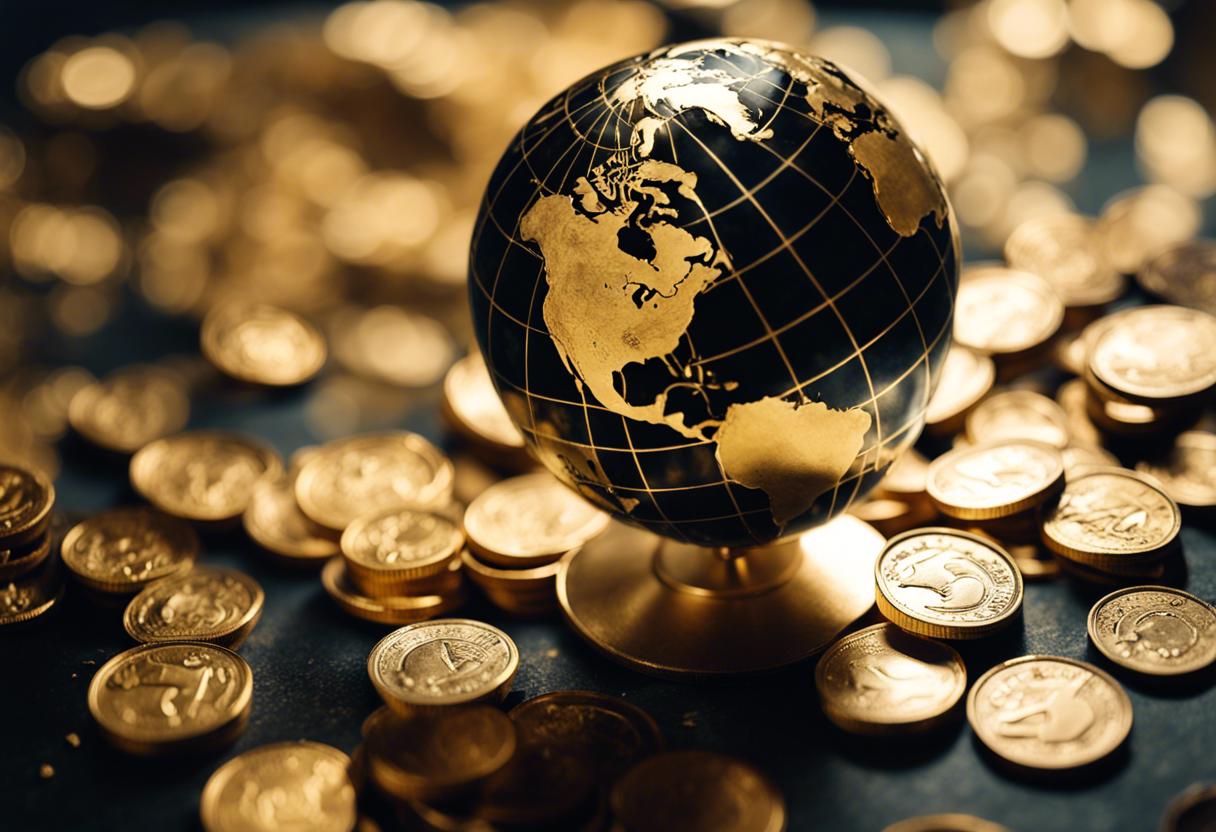In 1667, as the Dutch navy mounted an unexpected assault on British vessels in the Thames estuary, Samuel Pepys, a naval official and diarist, feared for the welfare of his country. In his panic, he had his wife and father depart London with his gold wealth to hide it in a garden. This historical episode underlines a long-standing tradition of entrusting gold as a safe haven in times of financial crisis.
A recent uptick in gold’s value reflects this tradition. Gold offers no dividends and is considerably heavy; however, during war, crisis, inflation, and turmoil, holding gold brings certain reassurance. As John Reade of the World Gold Council states, gold demonstrates its worth in adverse circumstances.
Gold’s reputation as an outdated investment option is being reshaped as it surges back into the limelight. On Tuesday, the value of gold hit an unprecedented peak of $2,531 (€2,277) per troy ounce. This is fivefold the inflation-adjusted price the UK received when it offloaded some of its gold reserves twenty-five years ago, a time when Switzerland was also a significant gold seller.
Central banks, particularly in China and Russia, are resuming gold purchases in an effort to lessen their dependence on the US dollar. Additionally, wealthy individuals across the globe and American hedge funds are aligning with market trends by increasing their gold investments. Uncertainties in the property market and economy are leading Chinese retail investors to the precious metal.
While there’s been a renewed interest in gold, it hasn’t translated into a surge in mining investments, as seen during the 19th century gold rushes in California and South Africa. For today’s exploration and mining companies, securing investment has proven challenging, as trading gold and derivatives have become more straightforward than mining and refining the metal.
Nick Brodie, the CEO of Golconda Gold, a minor Canadian mining corporation, admitted to a persisting sense of gloom in his company. In May, Golconda commenced the production of concentrate (or powdered gold ore), from a section of a South African mine they purchased in 2015 while it was inactive. This mine was initially christened ‘Agnes’, in honour of the spouse of the British explorer who discovered gold at the site in 1888.
Firms like Golconda struggle with heightened production expenditures; as Brodie candidly stated, “every single cent we earn goes straight back into the operations of the mine”. The gold ore concentrate must be transported to China for refinement. Although an increase in prices can lead to larger revenue eventually, it would be another three years until full production is achieved. Brodie stressed that gold mining isn’t a quick path to wealth.
Current gold reserves are already abundant. The New York Federal Reserve’s vaults stash away roughly 507,000 gold bars; approximately $510 billion worth according to recent prices. The weight of this amount is supported by the bedrock of Manhattan Island, situated 15m below sea level. The vaults of London, which encompass the ones belonging to the Bank of England, hold an additional 8,650 tonnes of gold; approximately $690 billion in value. Notably, plenty of mined gold ends up being re-buried.
Central banks, particularly those of China and Russia, and other nations keen to decrease their dependence on the US dollar, have recommenced gold purchases. The gold safeguarded by the New York Federal Reserve isn’t owned by the reserve. A considerable amount of it was brought there in a manner akin to how Pepys’s wealth was concealed in a garden. In the wake of World War II, numerous governments and investors relocated their gold to what they deemed to be secure foreign locations. The gold is heavily protected and has largely remained undisturbed.
The gold’s growing worth mirrors the deep-rooted concerns amongst investors. The price of gold typically surges during crises, for instance the Russian incursion into Ukraine in 2022, as investors seek refuge from riskier assets. This impact persisted even after G7 countries retaliated to the incursion by freezing Russia’s foreign exchange reserves, making gold in Russia less prone to vulnerability.
Efforts to detach their economic operations from the American dollar have been made by various nations, such as Russia, India, China, and Kazakhstan. This so-called “de-dollarisation” approach has increased central banks’ gold purchases during the last two years. These banks are also buying gold because they are apprehensive about potential long-term spikes in inflation, a fear that ironically stems from their core responsibility to regulate inflation.
However, financial commentators like Robert Kiyosaki, a respected author and investor, have further exacerbated fears of an economic catastrophe and the debasement of currency. He evoked heavy concerns this past April, referring to the looming threat of an “everything bubble” and advising individuals to invest in tangible assets like gold, silver, and even digital currencies such as bitcoin.
Such fear, coupled with revived faith in cryptocurrencies and uncertainty surrounding the American dollar, has contributed to a surge in the value of bitcoin this year. But history has demonstrated that these inflation fears and subsequent gold rush could be short-lived. After the financial crisis of 2008-2009, gold prices soared past $1,900 per ounce in 2011 due to concerns that monetary easing could cause inflation. However, these prices eventually plummeted.
Whether the present market excitement can endure is yet to be seen. Nonetheless, when economic disarray seems inevitable, the value of gold often prevails. As Samuel Pepys once noted amid turmoil, the assurance provided by the safety of one’s gold is invaluable. Despite the Dutch raid, England survived, and Pepys managed to reclaim his lost wealth. This observation still resonates in our current financial climate. Copyright The Financial Times.

